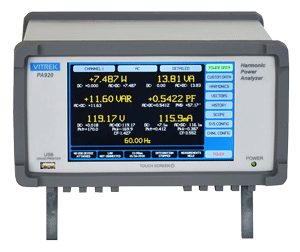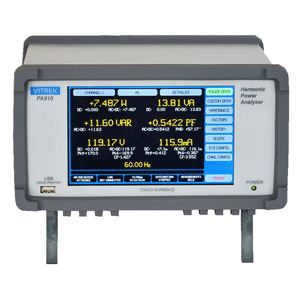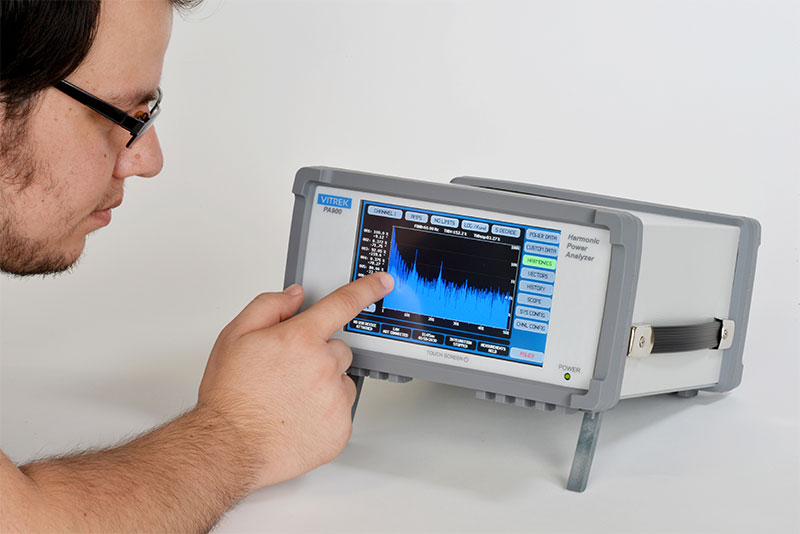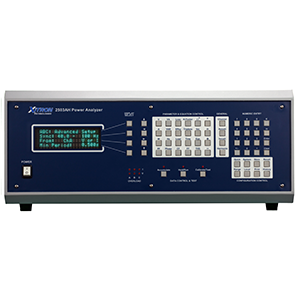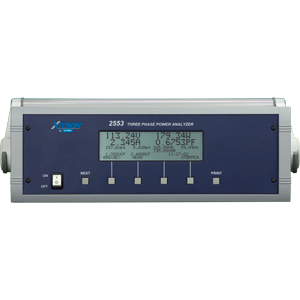Vitrek PA920 Ultra-High Accuracy (0.024%)
Multi-Channel Power Analyzer
Multi-Channel Power Analyzer
Introducing the Ultra High Accuracy Vitrek PA PA920 Precision Harmonic Power Analyzer, the newest additions to Vitrek’s family of Power Analyzer products.
The PA920 is the most powerful, accurate and flexible power analyzer available on the market today available with 0.024% power accuracy. These products provider faster sampling rates, bandwidth performance and greater harmonic frequency, yet still easy-to-use and affordable while providing the power analysis options you need for your testing application.
The PA920 power analyzers offer expanded power analysis options. The PA920 offers ultra high 0.024% power accuracy for all channels and improved voltage and current self-heating adders over those of other power analyzers. In addition, the PA920 provides easy channel selection for the user while offering 100 full precision readings per second and measurement bandwidths sufficient to handle 5 MHz waveforms.
When You Need Maximum Performance & Accuracy Choose Vitrek’s PA920 Series Power Analyzers!
• Ultra High Power Accuracy of 0.024% For All Channels
• Improved Voltage and Current Self-Heating Adders
• Faster Sampling Rates & Bandwidth Performance
• Greater Harmonic Frequencies
Vitrek PA910 High Accuracy (0.045%)
Precision Multi-Channel Power Analyzer
Precision Multi-Channel Power Analyzer
Vitrek’s High Accuracy (0.045%) PA PA910 Precision Harmonic Power Analyzer is one of the newest additions to Vitrek’s family of Power Analyzer products.
The PA910 is powerful, accurate and flexible with 0.045% power accuracy. These products provider faster sampling rates, bandwidth performance and greater harmonic frequency, yet still easy-to-use and affordable.
The PA910 power analyzers also offer expanded power analysis options. The PA910 offers ultra high 0.045% power accuracy for all channels and improved voltage and current self-heating adders over those of other power analyzers. In addition, the PA910 provides easy channel selection for the user while offering 100 full precision readings per second and measurement bandwidths sufficient to handle 5 MHz waveforms.
When You Need Quality, Reliability and Accuracy Choose Vitrek’s Family of Power Analyzer Products!
• High Power Accuracy of 0.045% For All Channels
• Improved Voltage and Current Self-Heating Adders
• Faster Sampling Rates & Bandwidth Performance
• Greater Harmonic Frequencies
Vitrek PA900 Precision Multi-Channel Power Analyzer
The Vitrek PA900 boasts an impressive array of precision power measurement capabilities, yet its color touchscreen user interface is refreshingly easy to use. The accuracy of the PA900 is truly world class – surpassing rival instruments costing triple the price. And when it comes to speed & bandwidth – the PA900 tops the charts with 100 full precision readings per second and measurement bandwidths sufficient to handle 5 MHZ waveforms. For tackling tough power factor, low phase angle and high crest factor loads – the PA900 is unbeatable. Offering full performance for crest factors as high as 30:1 – the PA900 places the advantage of superior power measurement capability squarely in the palm of your hands or if you prefer – at the tip of your finger.
Vitrek’s XiTRON XT2640 Power Analyzer
Vitrek’s XiTRON brand XT2640 is three power analyzers in a single chassis with a single interface. The XT2640 may have up to 4 Channels installed or optionally with the MU option combine units to grow to thousands of channels, which may be any combination of channel cards and with any combination of available current input options.
Vitrek Power Analyzer Videos
Vitrek Precision Power Analyzers
Vitrek is the premier leader in providing power analyzers to various industries ranging from medical to appliance industries. Offering both the best power analysis and premier customer service, Vitrek is the choice for your next power analyzer application.
